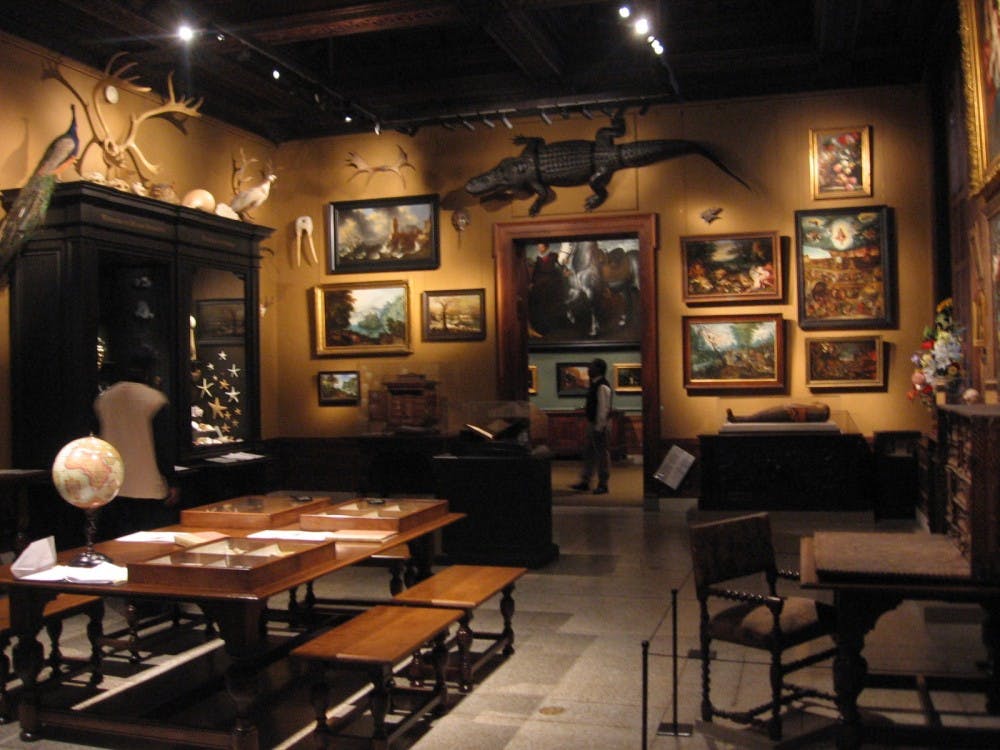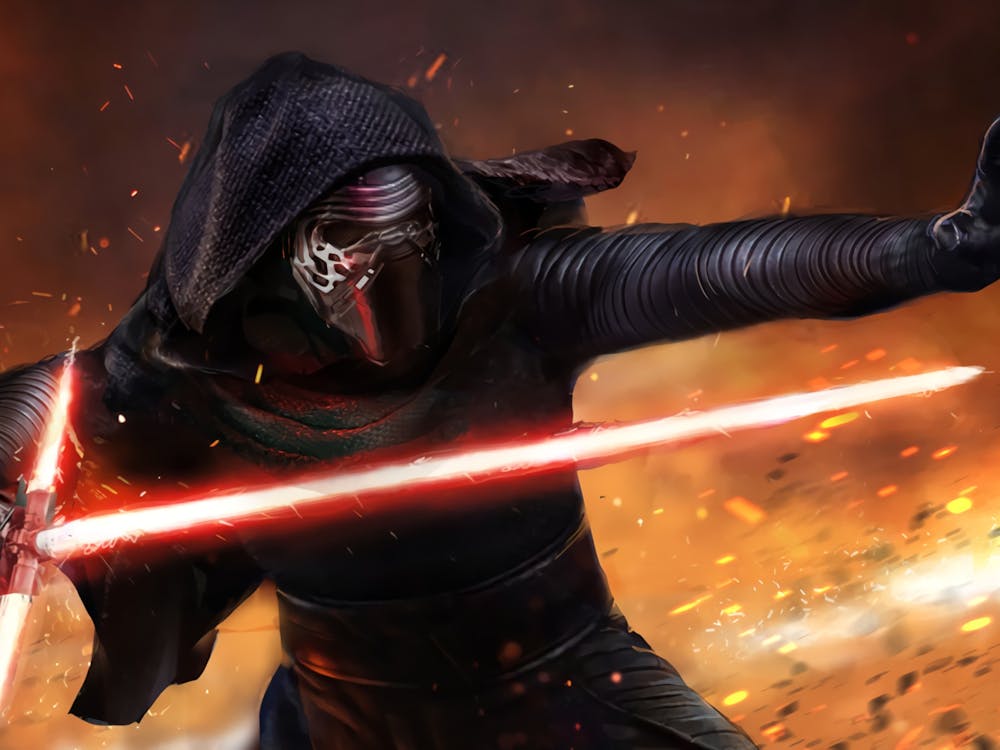By ISABELLA ALTHERR For The News-Letter
Last Thursday evening the sculpture garden of the Walters Art Museum was crowded with people clamoring to catch a glimpse of some rare sights. A fox was standing on its hind legs wearing jeans, a plaid flannel shirt and a red bandana around his neck. The skunk to its left sported a tiara, a glittering necklace and peacock feathers entwined in its tail. A little lamb looked skittish on its six legs while a couple tables away a jackalope was looking quite content.
These creatures are all examples of rogue taxidermy, an art form that was on full display at the Walters for their event titled “Memento Mori: A Night of Rogue Taxidermy.” The night was part of the “Thursday Nights at the Walters” series for which the museum stays open until 9 p.m. with a special exhibit and a bar for attendees over 21 years of age.
The event on Sept. 3 began with a talk limited to the first 65 visitors given by artist and rogue taxidermist Robert Marbury alongside the curator of Renaissance and Baroque Art Joaneath Spicer. The talk was followed by a demonstration of taxidermy methods lead by Divya Anantharaman, a member of a local taxidermy group Friends Forever Taxidermy where visitors observed the process of mounting hides on a form. The big event of the night, however, was the first ever Baltimore Taxidermy Open, a competition of rogue taxidermists and collectors curated by the Hampden curiosity shop Bazaar.
Rogue taxidermy is a form of art that combines aspects of traditional taxidermy with a morbid sense of humor. Unlike traditional taxidermy, which strives to present an animal as it appeared in life, rogue taxidermy expands the capabilities of the animal form. It is a combination of preservation, social commentary and a celebration of the grotesque and macabre.
Most of the practitioners of rogue taxidermy are themselves animal lovers. Artists collect road kill, donations from veterinarians and unused animal remains from traditional taxidermy practices.
Marbury, who acted as the Master of Ceremonies for the competition, is himself a vegan and does not use real animal skins in his creations.
Joel Topcik points out in the 2005 New York Times article “Head of Goat, Tail of Fish, More Than a Touch of Weirdness” that rogue taxidermy aims to inspire and disgust people at the same time.
A lot of the art form seems to be centered around making people consciously uncomfortable, something that happens pretty naturally.
“You are imbuing [a dead object] with life and giving it characteristics,” Marbury says in the same article.
These artistic stuffed animals are markedly distinct from the examples of taxidermy in the adjacent Chamber of Wonders where a massive taxidermied alligator hangs above a doorframe.
These preserved animals are neither anthropomorphized nor decorated as in rogue taxidermy. Nor are they placed into a lifelike setting as in a Natural History Museum. They serve as both a bridge between the two variations of the art form as well as a fitting background for the exhibits of the night.
The conclusion to the night’s festivities was the announcement of the contest winners by Mr. Marbury. The first prize was collected by artist Emi Slade for her Royal Griffin: a furred griffin with three large blue claws. The creativity of this piece came mostly from the choice of textile. As one approached the bird something seemed off until one realized that it was covered in fur instead of feathers.
Karen Nemes, who came with an antlered porcupine and a wooden board coated with red paint and feathers and titled “Icarus,” took home second place. Other awards were given out in categories such as “Bones,” “Anthropomorphics” and “Mixed Media.”
All participants seemed to have enjoyed themselves and perhaps inspired other artists to take up rogue taxidermy. At the very least, they inspired a newfound appreciation for the art form within the Baltimore community.
More events are scheduled to occur at the Walters this September to welcome more diverse and interactive art exhibits.
Notably, for anyone who has yet to stop by the Walters Art Museum located in Mt. Vernon, the museum will conduct a Walk-In Tour that requires no reservations, in order to display some of the exhibit highlights from ancient times to the 19th century.
Hopkins students interested in merging their scientific studies with a love of art can check out “The Science of Art, Part 1: Using Science to Shed New Light on Art,” a series of four workshops conducted by Walters conservators, scientists and educators. The class will be held on Wednesday, Sept. 16 from 4:30-7 p.m. and will introduce the distinguishing properties of materials, including minerals, metals, ceramics, glass and biomaterials.
For those interested in a more global or historical perspective on art, the Walters will offer two exhibits that focus on art from around the world. Both held on Sept. 20, “Walk-In Tour: The Influence of Religion on Art” and the discussion panel “Telling Global Stories” will provide visitors with a wider perspective on global cultures’ influence on art in the past and modern times.





